
A courser is a swift and strong horse, frequently used during the Middle Ages as a warhorse. It was ridden by knights and men-at-arms.

A courser is a swift and strong horse, frequently used during the Middle Ages as a warhorse. It was ridden by knights and men-at-arms.
Coursers are commonly believed to be named for their running gait, [1] (from Old French cours, 'to run' [2] ). However, the word possibly derived from the Italian corsiero, meaning 'battle horse'. [3]
The courser was more common than the destrier, [4] and used for battle as they were light, fast and strong. [1] They were valuable horses, but less expensive than the highly prized destrier. [5] Another horse commonly ridden during war was the rouncey, an all-purpose horse.
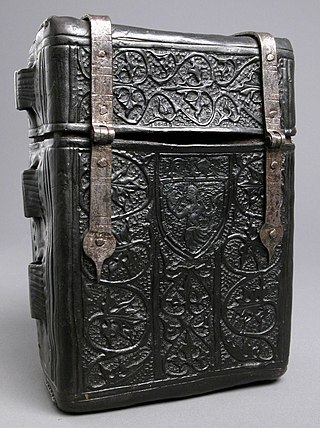
Boiled leather, often referred to by its French translation, cuir bouilli, was a historical material common in the Middle Ages and Early Modern Period and used for various purposes. It was leather that had been treated so that it became tough and rigid, as well as able to hold moulded decoration. It was the usual material for the robust carrying-cases that were made for important pieces of metalwork, instruments such as astrolabes, personal sets of cutlery, books, pens and the like. It was used for some armour, being both much cheaper and much lighter than plate armour, but could not withstand a direct blow from a blade, nor a gunshot.
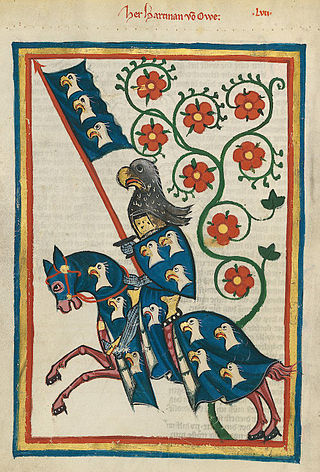
A knight is a person granted an honorary title of knighthood by a head of state or representative for service to the monarch, the church or the country, especially in a military capacity. Knighthood finds origins in the ancient Greek hippeis (ἱππεῖς) and Roman equites.

Chivalry, or the chivalric language, is an informal and varying code of conduct developed in Europe between 1170 and 1220. It is associated with the medieval Christian institution of knighthood, with knights being members of various chivalric orders; knights' and gentlemen's behaviours were governed by chivalrous social codes. The ideals of chivalry were popularized in medieval literature, particularly the literary cycles known as the Matter of France, relating to the legendary companions of Charlemagne and his men-at-arms, the paladins, and the Matter of Britain, informed by Geoffrey of Monmouth's Historia Regum Britanniae, written in the 1130s, which popularized the legend of King Arthur and his knights of the Round Table.

Jousting is a medieval and renaissance martial game or hastilude between two combatants either on horse or on foot. The joust became an iconic characteristic of the knight in Romantic medievalism.

A man-at-arms was a soldier of the High Medieval to Renaissance periods who was typically well-versed in the use of arms and served as a fully-armoured heavy cavalryman. A man-at-arms could be a knight, or other nobleman, a member of a knight's or nobleman's retinue, or a mercenary in a company serving under a captain. Such men could serve for pay or through a feudal obligation. The terms knight and man-at-arms are often used interchangeably, but while all knights equipped for war were men-at-arms, not all men-at-arms were knights.

A palfrey is a type of horse that was highly valued as a riding horse in the Middle Ages. It was a lighter-weight horse, usually a smooth gaited one that could amble, suitable for riding over long distances. Palfreys were not a specific breed as horse breeds are understood today.
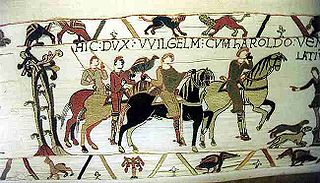
Royal hunting, also royal art of hunting, was a hunting practice of the aristocracy throughout the known world in the Middle Ages, from Europe to Far East. While humans hunted wild animals time immemorial, and all classes engaged in hunting as an important source of food and at times the principal source of nutrition. The necessity of hunting was transformed into a stylized pastime of the aristocracy. More than a pastime,l interaction, essential training for war, and a privilege and measurement of nobility. In Europe in the High Middle Ages the practice was widespread.

The destrier is the best-known war horse of the Middle Ages. It carried knights in battles, tournaments, and jousts. It was described by contemporary sources as the Great Horse, due to its significance.
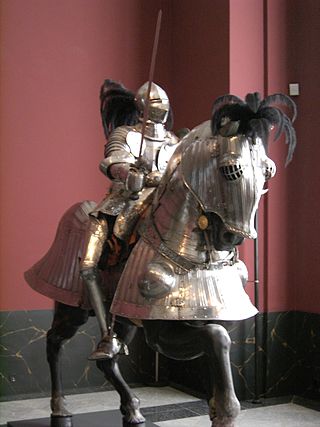
Barding is body armour for war horses. The practice of armoring horses was first extensively developed in antiquity in the eastern kingdoms of Parthia and Pahlava. After the conquests of Alexander the Great it likely made its way into European military practices via the Seleucid Empire and later Byzantine Empire. Though its historical roots lie in antiquity in the regions of what was once the Persian Empire, barded horses have become a symbol of the late European Middle Ages chivalry and the era of knights.

Heavy cavalry was a class of cavalry intended to deliver a battlefield charge and also to act as a tactical reserve; they are also often termed shock cavalry. Although their equipment differed greatly depending on the region and historical period, heavy cavalry were generally mounted on large powerful warhorses, wore body armor, and armed with either lances, swords, maces, flails (disputed), battle axes, or war hammers; their mounts may also have been protected by barding. They were distinct from light cavalry, who were intended for raiding, reconnaissance, screening, skirmishing, patrolling, and tactical communications.
A war horse is a horse used for fighting, including light and heavy cavalry, reconnaissance, logistical support, or in individual combat.

The first evidence of horses in warfare dates from Eurasia between 4000 and 3000 BC. A Sumerian illustration of warfare from 2500 BC depicts some type of equine pulling wagons. By 1600 BC, improved harness and chariot designs made chariot warfare common throughout the Ancient Near East, and the earliest written training manual for war horses was a guide for training chariot horses written about 1350 BC. As formal cavalry tactics replaced the chariot, so did new training methods, and by 360 BC, the Greek cavalry officer Xenophon had written an extensive treatise on horsemanship. The effectiveness of horses in battle was also revolutionized by improvements in technology, such as the invention of the saddle, the stirrup, and the horse collar.
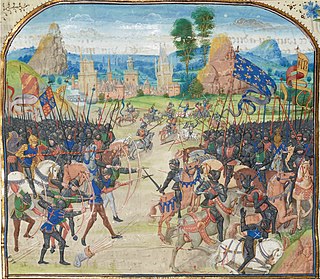
The term rouncey was used during the Middle Ages to refer to an ordinary, all-purpose horse. They were used for riding, but could also be trained for war. It was not unknown for them to be used as pack horses. The horse, which was also referred to as runcinus, is believed to be a harrowing animal on account of its proportions found in the demesne stock listing before it became an exclusively riding animal.
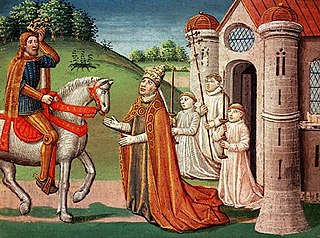
Horses in the Middle Ages differed in size, build and breed from the modern horse, and were, on average, smaller. They were also more central to society than their modern counterparts, being essential for war, agriculture, and transport.

The term baroque horse describes a group of horse breeds, usually descended from and retaining the distinctive characteristics of a particular type of horse that rose to prominence in Europe during the Baroque era, after significant development throughout the Middle Ages. It describes the type of agile but strong-bodied descendants of horses in the Middle Ages such as the destrier. Specific ancestors of this type include the Neapolitan horse, and the Iberian horse of Barb ancestry known in the Middle Ages as the Spanish Jennet. They are characterized by powerful hindquarters, a muscular, arched neck, a straight or slightly convex profile, and usually a full, thick mane and tail. These horses are particularly well suited for the haute ecole discipline of classical dressage.
Ann Hyland is a writer and historian who specialises in equestrianism and the development of horses. She is also a consultant for the Oxford English Dictionary.
The term Great Horse may refer to
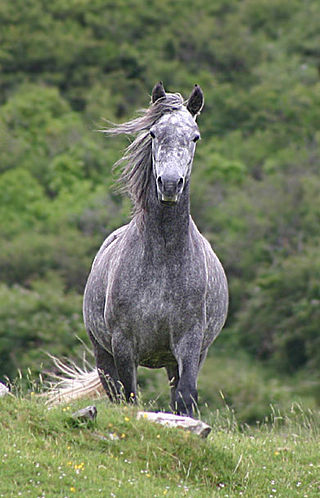
Hobelars were a type of light cavalry, or mounted infantry, used in Western Europe during the Middle Ages for skirmishing. They originated in 13th century Ireland, and generally rode hobbies, a type of light and agile horse.
The courser is a bird in the subfamily Cursoriinae.

The known history of the horse in Britain starts with horse remains found in Pakefield, Suffolk, dating from 700,000 BC, and in Boxgrove, West Sussex, dating from 500,000 BC. Early humans were active hunters of horses, and finds from the Ice Age have been recovered from many sites. At that time, land which now forms the British Isles was part of a peninsula attached to continental Europe by a low-lying area now known as "Doggerland", and land animals could migrate freely between what is now island Britain and continental Europe. The domestication of horses, and their use to pull vehicles, had begun in Britain by 2500 BC; by the time of the Roman conquest of Britain, British tribes could assemble armies which included thousands of chariots.